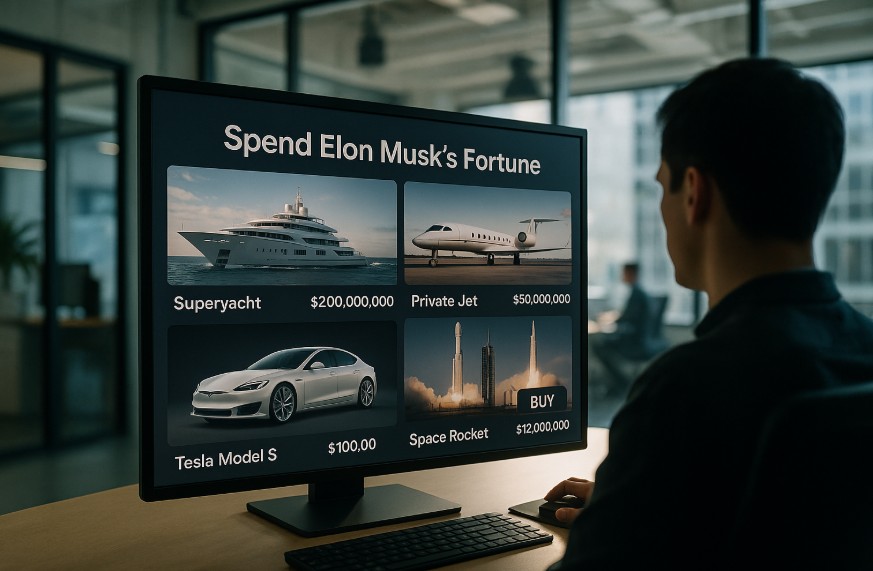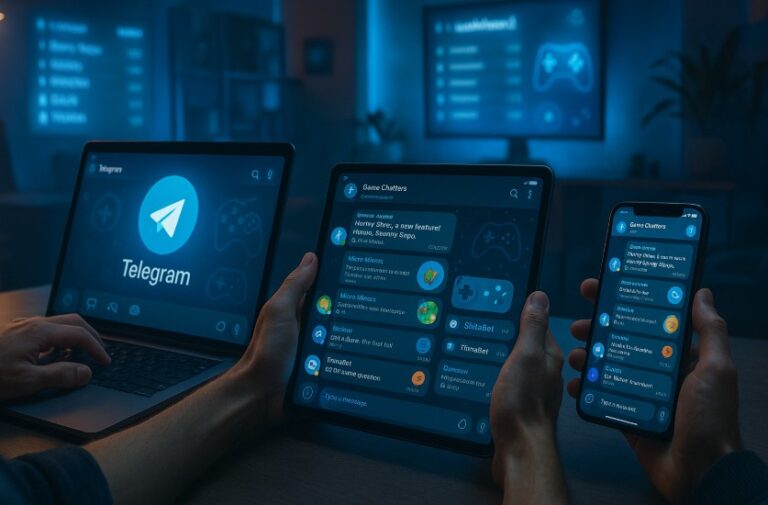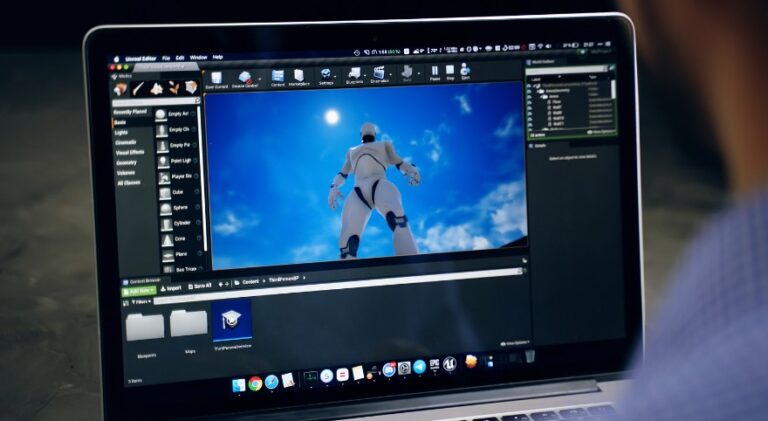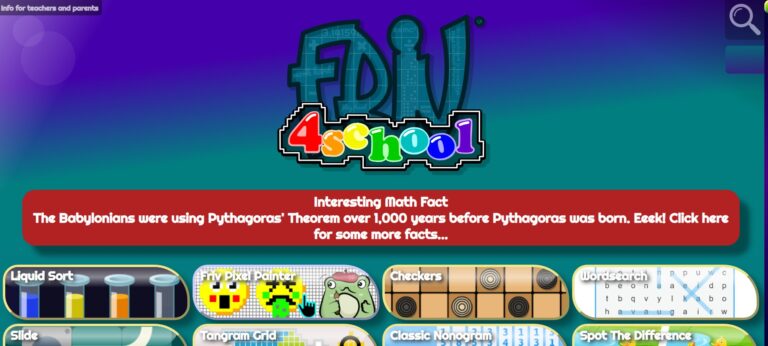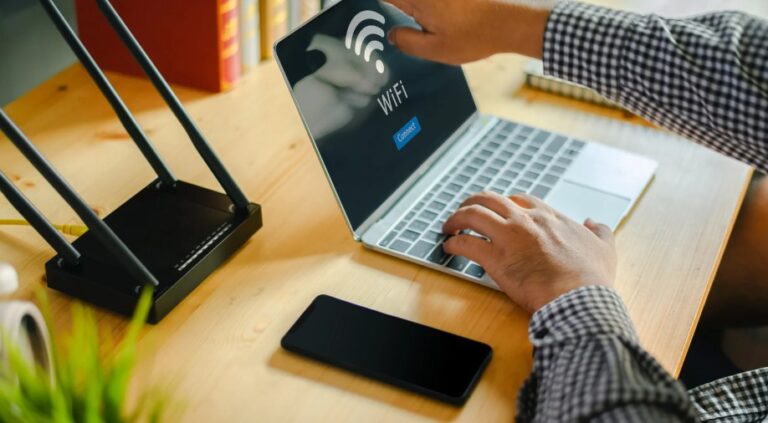Ever wondered what it would be like to spend a billionaire’s fortune? Neal.fun’s “Spend Elon Musk Money” simulator gives you the opportunity to explore how quickly – or slowly – you could burn through over $258 billion.
With real-world item pricing and a vast range of options, this tool offers an entertaining and eye-opening experience.
Whether you’re curious about extravagant luxury or want to experiment with investment choices, this game provides a fascinating look into modern-day wealth on an unimaginable scale.
What Is the Spend Elon Musk Money Game on Neal.fun?

The Spend Elon Musk Money simulator hosted on Neal.fun presents users with an entertaining way to grasp the vast scale of Elon Musk’s fortune. Once you land on the page, you’re handed a virtual $258.7 billion and encouraged to spend every cent.
The goal is simple but the execution becomes increasingly complex as users navigate a wide range of categories, from consumer electronics to private islands and even entire sports teams.
The game interface is clean, with clearly marked “Buy” and “Sell” buttons for each item, along with a running total of how much money has been spent. There is no login or account creation needed, making it accessible and fast to jump into.
Beyond amusement, the game encourages players to critically think about the concept of wealth distribution, consumption, and the enormous financial capacity wielded by the ultra-rich.
While humorous in nature, it cleverly reflects on the power and responsibility that come with extreme wealth.
How Did Elon Musk Accumulate His Billion-Dollar Fortune?
Elon Musk’s wealth did not materialise overnight. It is the result of decades of innovation, entrepreneurship, and high-risk ventures in sectors that are fundamentally reshaping the future.
The simulator indirectly educates players about these industries by including items and projects from Musk’s business ventures.
Musk’s fortune is primarily built upon:
Tesla Inc.: As CEO and a significant shareholder, Musk has overseen Tesla’s rise as a global leader in electric vehicles, battery storage, and energy solutions.
SpaceX: Founded with the mission to make life multi-planetary, SpaceX has transformed the aerospace industry through reusable rockets and commercial space contracts.
Neuralink; This neurotechnology startup is developing implantable brain–machine interfaces that may eventually help treat neurological conditions and integrate human cognition with AI.
The Boring Company: Aiming to reduce city congestion through underground tunnel systems, this venture is testing new transport infrastructure methods.
X (formerly Twitter); By acquiring and rebranding Twitter, Musk has extended his influence into social media and digital communications, turning X into a multipurpose platform.
These companies contribute to a complex and highly diversified financial portfolio, reflected in the game through the option to “buy” entire divisions or mimic such large-scale investments.
What Are the Choices to Spend in the Simulator?
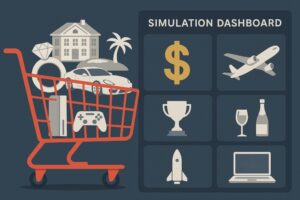
The Spend Elon Musk Money simulator offers an expansive and imaginative list of items that players can virtually “buy” using Elon Musk’s multi-billion dollar fortune.
The items span a wide range of categories—from consumer electronics to rare luxury goods, real estate, and even high-stakes investments. These choices reflect both realistic everyday purchases and fantasy-level extravagance.
Here’s a breakdown of the major spending categories and sample items available within each:
1. Consumer Electronics and Everyday Tech
These are entry-level items that barely dent your virtual fortune, but they’re great for fine-tuning your total spend.
- Nintendo Switch – $299
- PlayStation 5 – $350
- Xbox Series X – $499
- Samsung S23 Ultra – $1,399
- iPhone 15 Pro Max – $1,499
- Facebook Oculus VR – $999
- MacBook Pro 2023 – $3,999
- Gaming PC – $4,999
- Lifetime Netflix – $999
- Drone – $350
- Smartphone – $699
2. Pets and Personal Items
These give the simulation a personal touch, reflecting lifestyle and preference-based spending.
- Kitten – $1,500
- Puppy – $1,500
- Designer Handbag – $5,500
- Diamond Ring – $10,000
- Luxury Wine – $7,000
- Hot Tub – $6,000
- Rolex – $15,000
3. Vehicles and Transportation
Ranging from personal vehicles to military-grade equipment, these items vary widely in price and impact.
- Bike – $800
- Auto Rickshaw – $2,300
- Horse – $2,500
- Ford F-150 – $30,000
- Tesla – $75,000
- Monster Truck – $150,000
- Ferrari – $250,000
- Jet Ski – $12,000
- M1 Abrams Tank – $8,000,000
- Apache Helicopter – $31,000,000
- Boeing 747 – $148,000,000
4. Real Estate and Properties
These options simulate land acquisition and luxury living.
- Acre of Farmland – $3,000
- Single Family Home – $300,000
- Mansion – $45,000,000
- Luxury Home – $6,000,000
- Modern Building – $12,000,000
- Skyscraper – $850,000,000
- A. Mega Mansion – $52,000,000
- Private Island – (not in original list but commonly featured)
5. Businesses and Media Investments
These simulate high-stakes business decisions and media control.
- KFC Franchise – $2,500,000
- Make a Movie – $100,000,000
- Superbowl Ad – $5,250,000
- NBA Team – $2,120,000,000
6. Luxury and Collectibles
These represent the most indulgent ways to burn through billions.
- Yacht – $7,500,000
- Cruise Ship – $930,000,000
- Gold Bar – $700,000
- Mona Lisa – $780,000,000
- Formula 1 Car – $15,000,000
Item Categories and Range of Costs
| Category | Example Items | Price Range |
| Electronics | iPhones, consoles, laptops | $299 – $4,999 |
| Lifestyle | Pets, handbags, jewellery | $1,500 – $15,000 |
| Vehicles | Bikes to fighter helicopters | $800 – $31,000,000 |
| Real Estate | Farmland to skyscrapers | $3,000 – $850,000,000 |
| Investments & Media | Franchises, ads, movie production | $2,500,000 – $2.1B |
| Luxury Assets | Yacht, cruise ship, Mona Lisa | $7.5M – $930M+ |
With such a diverse selection, players can experiment with wildly different spending strategies—from extravagant and wasteful to purposeful and investment-oriented. The choices are designed not just for fun, but also to provoke thought about value, consumption, and the responsibility that accompanies unimaginable wealth.=
What Does a Sample Spending Strategy Look Like?
To better understand how spending billions works within the Neal.fun simulator, let’s examine a real example of a session completed by a user. In this simulation, the player began with an available total of $100,841,967,000. Through selective purchasing, they managed to spend approximately 0.33% of the total virtual wealth—an eye-opener in terms of just how vast that fortune is.
Sample Spending Summary
This particular simulation took place on 18 June 2025 and was logged under invoice #301455 for the user “John Doe.” The purchases made were diverse but focused on a mix of practical and high-investment items. Here’s how the money was spent:
| Item | Unit Price (USD) | Quantity Purchased | Total Spent |
| Acre of Farmland | $3,000.00 | 1 | $3,000.00 |
| Ford F-150 | $30,000.00 | 1 | $30,000.00 |
| Apache Helicopter | $31,000,000.00 | 1 | $31,000,000.00 |
| Make a Movie | $100,000,000.00 | 3 | $300,000,000.00 |
| Total Spent | $331,033,000.00 |
The total spent during the session amounted to $331,033,000, which represents only a small fraction—precisely 0.33%—of the starting budget. This leaves a staggering $99,668,967,000 still available for spending.
Insights from This Strategy
This simulation reveals a few interesting patterns:
- Balanced choices: The user combined modest real estate (an acre of farmland) with high-value assets like an Apache helicopter and film production.
- Entertainment as investment: Selecting to “make a movie” three times indicates a focus on creative or media ventures, which can be interpreted as both a vanity purchase and a financial investment.
- Minimalist approach: Despite having over $100 billion at their disposal, the user made just a few select purchases, showing how even large-ticket items barely make a dent in the billionaire budget.
This example underscores how difficult it can be to significantly reduce Musk’s virtual fortune—even with extravagant purchases. It also encourages players to think creatively and strategically when exploring the full extent of spending possibilities.
How Can You Start Spending in the Game?
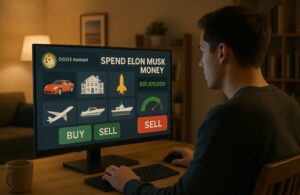
Interacting with the simulator is intuitive. Users begin with Musk’s full net worth and can immediately start selecting items to buy by clicking a button next to each listing. The quantities are adjustable, and each purchase reduces the remaining balance in real time.
A feature called the D.O.G.E. Assistant tracks all your transactions, offering a digital receipt that logs your selections and total expenditure. You can also “sell” items to recover funds if you change your strategy mid-way.
Here’s a simplified table outlining the user flow:
| Action | Functionality |
| Select an item | Adds it to your cart and deducts the cost from your balance |
| Adjust quantity | Allows bulk purchases of a specific item |
| Use “Sell” option | Removes the item and restores the amount to your balance |
| Monitor receipt | Shows an itemised list with costs and total spent |
The game doesn’t impose any time limit unless players choose to create challenges for themselves. This freedom allows exploration of different spending strategies over multiple sessions.
What Can You Buy with Elon Musk’s Fortune?
The virtual marketplace in the simulator is impressively diverse, featuring dozens of categories across consumer products, real estate, transportation, and massive capital investments. The selection reflects both real-world valuations and common cultural associations with luxury and power.
Categories include:
- Technology and Electronics such as gaming consoles, laptops, smartphones, and VR headsets
- Real Estate like private islands, mansions, and acres of farmland
- Transportation Assets including Tesla cars, jets, yachts, and helicopters
- Cultural Icons such as owning a Mona Lisa replica or funding a blockbuster film
Here is a selection of items and their estimated in-game prices:
| Item | Cost | Category |
| Tesla Model S | $75,000 | Automotive |
| Yacht | $7,500,000 | Luxury Transportation |
| Superbowl Advertisement | $5,250,000 | Media/Marketing |
| Private Island | $50,000,000 | Real Estate |
| NBA Team | $2,120,000,000 | Entertainment |
These prices are rounded figures based on market averages and are used to create an engaging, realistic experience without overwhelming the player with micro details.
Can You Turn This Game Into a Challenge?
The simulator itself does not have built-in challenges or leaderboards, but players have developed their own game modes to make the experience more interactive and competitive.
Some opt to race against the clock, while others prefer carefully planned strategies designed to simulate responsible billionaire behaviour.
Common self-imposed challenges include:
- Spending the entire fortune in under a minute
- Attempting to only buy practical or sustainable assets
- Building a philanthropic portfolio focused on energy, education, and health
- Mimicking the investment strategy of real billionaires
These challenges encourage players to rethink how they value different categories of spending. For example, choosing between buying five yachts or investing in solar energy startups introduces a layer of thoughtful decision-making.
Why Should You Share Your Billionaire Strategy?
After completing a spending session, players receive a breakdown of their purchases in the form of a digital receipt. This can be easily screenshotted and shared across social media platforms such as X or Facebook.
The sharing feature is more than just fun; it fosters community engagement. Friends can challenge each other, compare receipts, or critique each other’s decisions in a playful yet insightful way. This turns what could be a solo activity into a shared learning experience about consumerism, investment, and social values.
The social component also encourages repeat visits, as users return to try new strategies and outperform their own or others’ past performances.
What Tips Help You Spend Elon Musk’s Money More Smartly?
While the game doesn’t require a strategy, using one can make the experience more rewarding and intellectually stimulating. Many users start out buying high-ticket luxury items but later pivot to more balanced spending as they engage more deeply with the tool.
Here are a few strategic tips:
- Mix essential and extravagant purchases to simulate real-world budget management
- Revisit your receipt and look for redundancy or overindulgence
- Use smaller purchases to fine-tune your total after big spending
- Consider how your choices reflect values such as sustainability, innovation, or cultural impact
These approaches add depth to the simulator and help users reflect on how spending decisions mirror personal and societal priorities.
Why Is This Simulator So Popular?

The simulator taps into widespread public curiosity about the lifestyles of billionaires. It presents a rare chance to symbolically step into the shoes of someone with unimaginable financial power, all within a judgement-free, virtual sandbox.
Its popularity also stems from:
- Ease of access and intuitive design
- The ability to simulate real economic principles through play
- A sense of humour balanced with educational value
- Connection to topical figures like Elon Musk, who frequently dominates headlines
Users walk away with more than just a few minutes of entertainment—they gain a clearer understanding of the vast gap between everyday financial reality and the billionaire experience.
Did You Know There Are More Games Like This?
Neal.fun has developed similar games featuring other billionaires’ fortunes, offering unique perspectives on how different wealth portfolios could be spent. These alternatives expand the simulator’s appeal and let players explore new spending scenarios.
For example:
- Spend Bill Gates Money: This version includes a stronger emphasis on philanthropy, medicine, and technology.
- Spend Jeff Bezos Money: Reflects a more commerce-oriented selection of purchases, including logistics, media, and space tourism.
Trying out multiple simulators can offer comparative insights into how the source of wealth influences the types of purchases featured and the challenges players create.
Conclusion
The “Spend Elon Musk Money” simulator is more than just a fun online activity – it’s a thought-provoking experiment in financial decision-making.
By offering insight into how vast fortunes can be spent, it encourages players to reflect on priorities, value, and the realities of extreme wealth.
Whether you treat it as a challenge or a curiosity, the game is a creative way to engage with big numbers and bold ideas. Explore the possibilities and see how you’d manage Musk’s massive fortune.
Frequently Asked Questions (FAQ)
Is the Spend Elon Musk Money game free to play?
Yes, the game is completely free to access and play on the Neal.fun website, with no sign-up required.
Can I actually win anything by playing the game?
No, it’s purely a simulation designed for fun and educational purposes. There are no prizes or financial gains involved.
Is the item pricing in the game accurate?
The prices are estimations based on real-world averages, but they are simplified for gameplay purposes and may not reflect the most recent market rates.
Is the game available on mobile devices?
Yes, the game works on most modern smartphones and tablets through a web browser.
Can I save my progress in the game?
Currently, the game doesn’t offer a save function. However, you can screenshot your receipt or share it online.
What inspired the creation of this simulator?
The game is inspired by public curiosity about billionaires and aims to provide a humorous yet insightful way to visualise immense wealth.
Are there any age restrictions for playing the game?
There are no strict age restrictions, but the content is best suited for older children and adults due to its themes related to wealth and economics.

